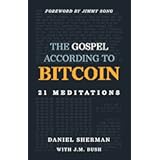How to Trade Crypto: A Beginner’s Guide to Fast & Safe Trading
Are you looking to dive into the exciting world of cryptocurrency but feel overwhelmed by the complexity? Watching the video above likely gave you a solid visual foundation, guiding you through the initial steps of making your first crypto trade, navigating trading screens, and understanding how to deposit and withdraw funds. This article will build upon that knowledge, expanding on critical concepts and providing a deeper understanding to help you confidently approach crypto trading as a complete beginner.
For those new to digital assets, making your first cryptocurrency trade can seem daunting. There are numerous platforms, different types of orders, and a lexicon of terms that can be confusing. However, with the right guidance, the process is straightforward and accessible. Our goal is to demystify how to trade crypto, ensuring you understand each step from choosing an exchange to executing your buy or sell orders effectively.
Choosing Your First Crypto Exchange
One of the most crucial initial steps when you’re looking to trade crypto is selecting a reputable centralized exchange. These platforms act as intermediaries, allowing you to convert traditional fiat currencies (like USD or EUR) into cryptocurrencies and vice versa. They offer a secure and regulated environment, which is especially important for beginners who are just getting started. The video highlighted several top-tier exchanges such as Binance, OKX, Bybit, crypto.com, and Coinbase, noting that roughly 99% of users experience success with these established platforms.
When choosing an exchange, several factors should influence your decision beyond just brand recognition. Regional availability is key, as some platforms offer better services or have different regulatory obligations depending on your country. Additionally, trading fees can vary significantly between exchanges; understanding these costs, including maker and taker fees, is vital for maximizing your returns over time. While the core functionality of buying and selling crypto remains consistent across these platforms, small differences in features and fee structures can impact your overall experience.
Funding Your Account: Fiat On-Ramps and KYC
Before you can begin to buy crypto, you’ll need to transfer fiat currency into your chosen exchange account. This process is commonly referred to as using “fiat on-ramps.” Most major exchanges support various deposit methods, including bank transfers (e.g., SEPA for Euro, SWIFT for USD) and integrations with fintech apps like Wise or Revolut. This flexibility ensures that users globally can easily fund their trading accounts, converting their local currency into digital assets ready for trading.
Crucially, you will be required to complete a Know Your Customer (KYC) verification process before you can deposit or withdraw significant funds. This involves providing identification documents, such as an ID card, passport, and often proof of address. KYC is a regulatory requirement designed to prevent money laundering and fraud, enhancing the security of both the platform and its users. Relying on top exchanges ensures that your personal information is handled with the utmost security and compliance, giving you peace of mind as you move money in and out of the system.
Navigating the Crypto Trading Screen
Once your account is funded, the next step is to familiarize yourself with the trading screen, which might initially appear complex. Despite visual differences, all major crypto exchanges, like those showcased in the video (Bybit, Binance, crypto.com), share a remarkably similar layout for spot trading. This standardized interface typically includes a price chart, an order book, and an order entry panel where you can specify your trades.
The price chart visually represents the historical price movements of a particular cryptocurrency, offering insights into market trends. The order book is a real-time list of all outstanding buy (bid) and sell (ask) orders for a specific trading pair. Buyers, known as bidders, display the prices they are willing to pay and the amounts they wish to purchase, typically shown in red at the bottom of the order book. Conversely, sellers show the prices they are willing to accept and the amounts they want to sell, usually in green at the top. Understanding these elements is fundamental to making informed crypto trades.
Understanding Trading Pairs
When you enter the spot trading screen, you’ll encounter the concept of “trading pairs.” A trading pair consists of two currencies, for example, BTC/USDT or BTC/EUR, indicating how much of the quote currency (right side) is needed to buy one unit of the base currency (left side). If you’ve deposited Euros, you would typically look for a pair like BTC/EUR to directly buy Bitcoin with your Euros. Similarly, if you deposited U.S. Dollars or USD stablecoins, you would opt for pairs like BTC/USD or BTC/USDT.
Stablecoins, such as USDT (Tether) and USDC (USD Coin), are cryptocurrencies pegged to the value of a fiat currency, most commonly the U.S. dollar, on a 1:1 basis. They are widely used in crypto trading as they offer the stability of fiat currency without needing to convert back to traditional banking systems, providing a bridge between volatile cryptocurrencies and stable assets. Trading against a stablecoin like USDT essentially means you’re trading against the U.S. dollar, simplifying calculations and reducing exposure to market fluctuations during a trade.
Executing Your First Trade: Market vs. Limit Orders
With your funds deposited and trading pair selected, you’re ready to place an order. There are primarily two types of orders beginners should understand: Market Orders and Limit Orders.
1. Market Orders: Speed and Simplicity
A market order is the quickest and simplest way to buy or sell crypto. When you place a market order, you instruct the exchange to execute your trade immediately at the best available current market price. The video demonstrated this by purchasing $20 worth of Bitcoin (BTC) using USDC. The system instantly matches your order with the lowest available sell offer (if buying) or the highest available buy offer (if selling) in the order book. This guarantees immediate execution, but it doesn’t guarantee a specific price, as prices can fluctuate rapidly, especially in volatile markets.
Market orders are ideal when speed is your priority, and you’re willing to accept the prevailing market price. For instance, if you believe a cryptocurrency is about to experience a significant price surge and you want to enter the market without delay, a market order serves that purpose. However, for larger trades or in illiquid markets, market orders can lead to “slippage,” where the executed price is less favorable than anticipated due to the order consuming multiple price levels in the order book. This is why professionals often prefer more control over their entry and exit points.
2. Limit Orders: Precision and Control
A limit order offers more control over the price at which your trade is executed. With a limit order, you specify the maximum price you’re willing to pay when buying or the minimum price you’re willing to accept when selling. The video illustrated this by attempting to buy BTC with a limit of 93,000 when the market price was 94,500. Since the limit price was below the market price for buying, the order did not execute immediately but instead entered the order book, waiting for the price to drop to 93,000 or lower.
Limit orders are incredibly useful for strategic trading, allowing you to set desired entry or exit points. They prevent you from buying at an inflated price or selling at a depressed one, as your order will only fill if the market reaches your specified limit or a better price. If the market never reaches your limit price, your order simply won’t execute, which might mean missing a trade but also protects you from unfavorable price movements. You can set, edit, or cancel limit orders at any time before they are filled, providing flexibility for your crypto trading strategy.
Selling Your Crypto and Withdrawing Funds
Selling your crypto follows the exact same principles as buying. You navigate to the “Sell” tab on the trading screen, select the cryptocurrency you wish to sell, and choose your desired trading pair (e.g., BTC/USDC or BTC/EUR). Similar to buying, you can use either a market order for immediate execution at the current best price or a limit order to specify the price you want to sell at.
Once you’ve sold your cryptocurrency, converting it back into fiat currency (like USD or EUR) requires using the fiat currency trading pair (e.g., BTC/EUR). After the sale, your funds will be held as fiat in your exchange wallet. From there, you can initiate a withdrawal back to your linked bank account or fintech app. This final step completes the entire cycle of crypto trading, demonstrating the full capability of centralized exchanges to manage your digital assets from entry to exit.







